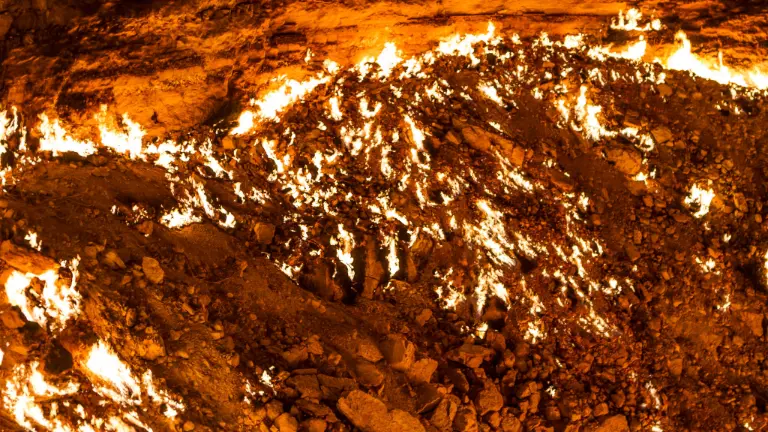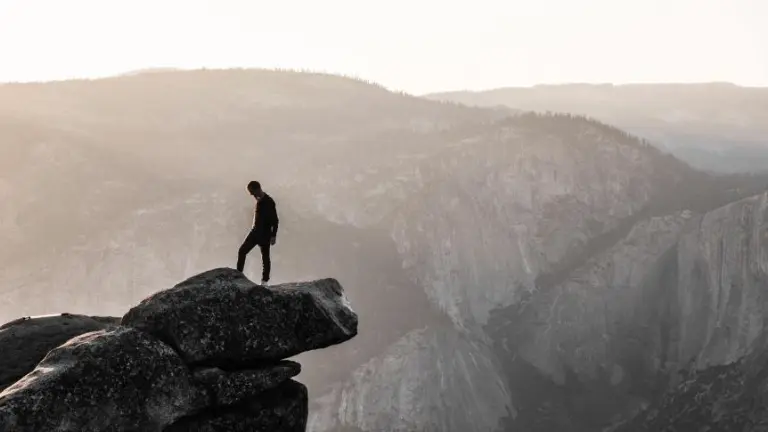The Door to Hell: Unveiling the Secrets of Darvaza's Eternal Fire
Imagine a crater glowing with relentless flames in the middle of nowhere. This isn’t a scene from a sci-fi movie. It’s the Darvaza Crater, a real place in Turkmenistan. Locals call it “The Door to Hell.” This article will explore the origin of this fiery pit, the science that keeps it burning, and what the future might hold for this strange place.
The Accidental Gate to the Underworld
When Man Drilled Too Deep
According to National Geographic, it all started with a routine Soviet gas expedition in 1971…
Geologists, seeking natural gas riches, drilled into the earth—only to find that the ground itself was unstable. Within moments, it collapsed into a gaping crater, swallowing equipment and dreams alike.

Toxic Winds from the Depths
But the crater wasn’t empty. A foul, invisible breath emerged—methane, dangerous and flammable. To prevent an environmental catastrophe, scientists set it ablaze, expecting it to burn off in mere weeks.
A Flame That Refused to Die
Weeks turned into months. Then decades.
The flames never wavered.
Today, they still flicker, as though something deeper keeps feeding them… something ancient, perhaps?
The flames never wavered.
Today, they still flicker, as though something deeper keeps feeding them… something ancient, perhaps?
💡 Did You Know?
Scientists initially thought the flames would burn out in just a few weeks. It’s been over 50 years, and the fire still blazes without pause.
Cracked Earth, Eternal Hunger: What Fuels the Fire?
Gas Laced with Secrets
The crater releases a potent mix of methane and other gases. Invisible yet deadly, they escape from deep underground reserves that seem bottomless.
The Shape of a Curse
The crater is not just a hole—it’s a wound, jagged and glowing, 230 feet across and 65 feet deep. It groans and shifts, unstable and unpredictable, like the Earth itself is still adjusting.
A Never-Ending Leak
Scientists believe natural gas deposits beneath Darvaza continue to leak into the crater—feeding the fire endlessly. It’s a pipeline straight from the planet’s fiery veins.
Quick Facts About the Door to Hell
- Location: Karakum Desert, Turkmenistan
- Year Formed: 1971
- Diameter: ~230 feet (70 meters)
- Depth: ~65 feet (20 meters)
- Main Gas: Methane
- Current Status: Still burning after 50+ years
The Flames That Changed a People
Breathing Fire, Living Near It
The Door to Hell doesn’t just haunt the land visually—it affects air quality too. While no major city lies nearby, the toxic plume could pose long-term risks to those who wander too close.
Tourism to the Edge of the Abyss
As described in a BBC Travel feature, despite the danger, the flames draw crowds…
Thrill-seekers, explorers, and mystery-lovers flock to Darvaza to witness the surreal sight. Locals have begun offering camel tours, campsites, and eerie night experiences, turning the blaze into a business.

Nomads of the Inferno
Nomadic tribes have lived in the Karakum for generations. Now, some graze their herds near the crater, adapting to its presence as if it were just another part of the strange desert landscape.
⚠️ Environmental Concern
The constant burning releases CO₂ and pollutants into the air, potentially affecting air quality and contributing to climate change.
Attempts to Seal the Curse
Closing the Mouth of Hell
In 2010, Turkmenistan’s president ordered the crater extinguished once and for all. But despite plans and promises, the fire resisted every attempt to be silenced.
Global Experts, One Fiery Problem
Engineers and scientists worldwide have studied it, proposing elaborate fixes—gas capture, capping, even controlled collapse—but none have succeeded. The crater fights back, always.
Too Risky to Bury
There are fears that sealing the crater could trap gas underground, causing a larger explosion or opening new vents. For now, doing nothing is safer.
Looking Ahead: Hope or Doom?
Can We Tame the Flame?
Some researchers dream of turning the relentless methane into usable energy. Imagine harnessing this infernal pit to power homes—turning a mistake into a miracle.
New Minds on an Old Flame
With better tech and global collaboration, there may yet be a solution. But until then, the Door to Hell remains open, unsolved, and steadily burning through time.
A Blazing Reminder
Above all, Darvaza is a lesson in humility. A monument to how mankind can awaken forces it cannot control. It is both a spectacle and a warning—a red, burning eye staring into our environmental future.
Curious about another place where fire refuses to die? Check out our blog on the Centralia Mine Fire—America’s own Door to Hell.
⚡ Future Possibility
What if the Door to Hell could generate renewable energy from methane capture? Scientists are exploring this idea, but the engineering challenges remain massive.
Conclusion: Into the Inferno
The Door to Hell is more than just a hole in the ground—it is a living mystery.
A place where science, myth, and fear collide.
It reminds us that Earth still holds secrets, and sometimes, those secrets burn.
It reminds us that Earth still holds secrets, and sometimes, those secrets burn.
As the fire continues to glow under the desert stars, one question lingers:
What happens when the Earth decides not to sleep?







